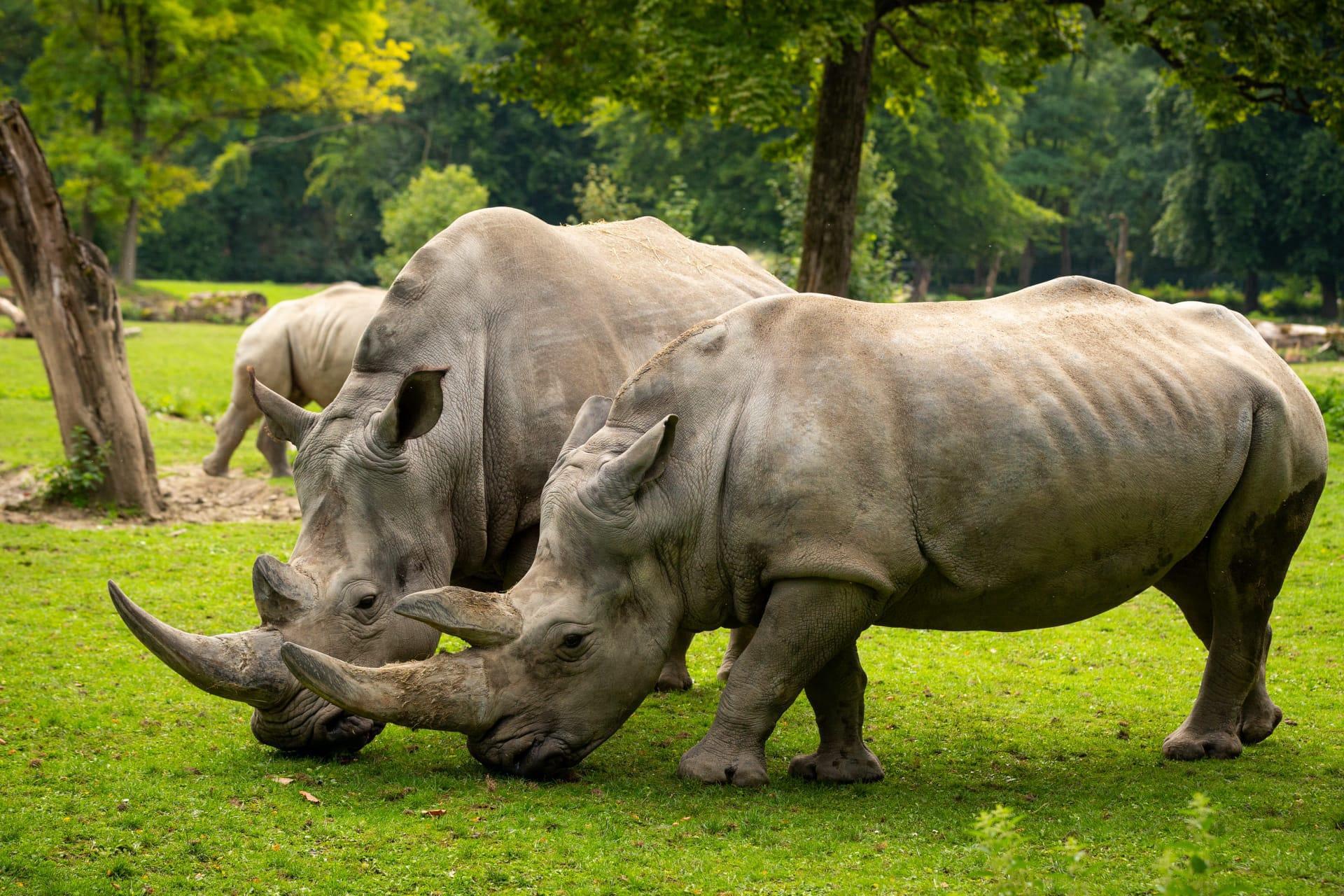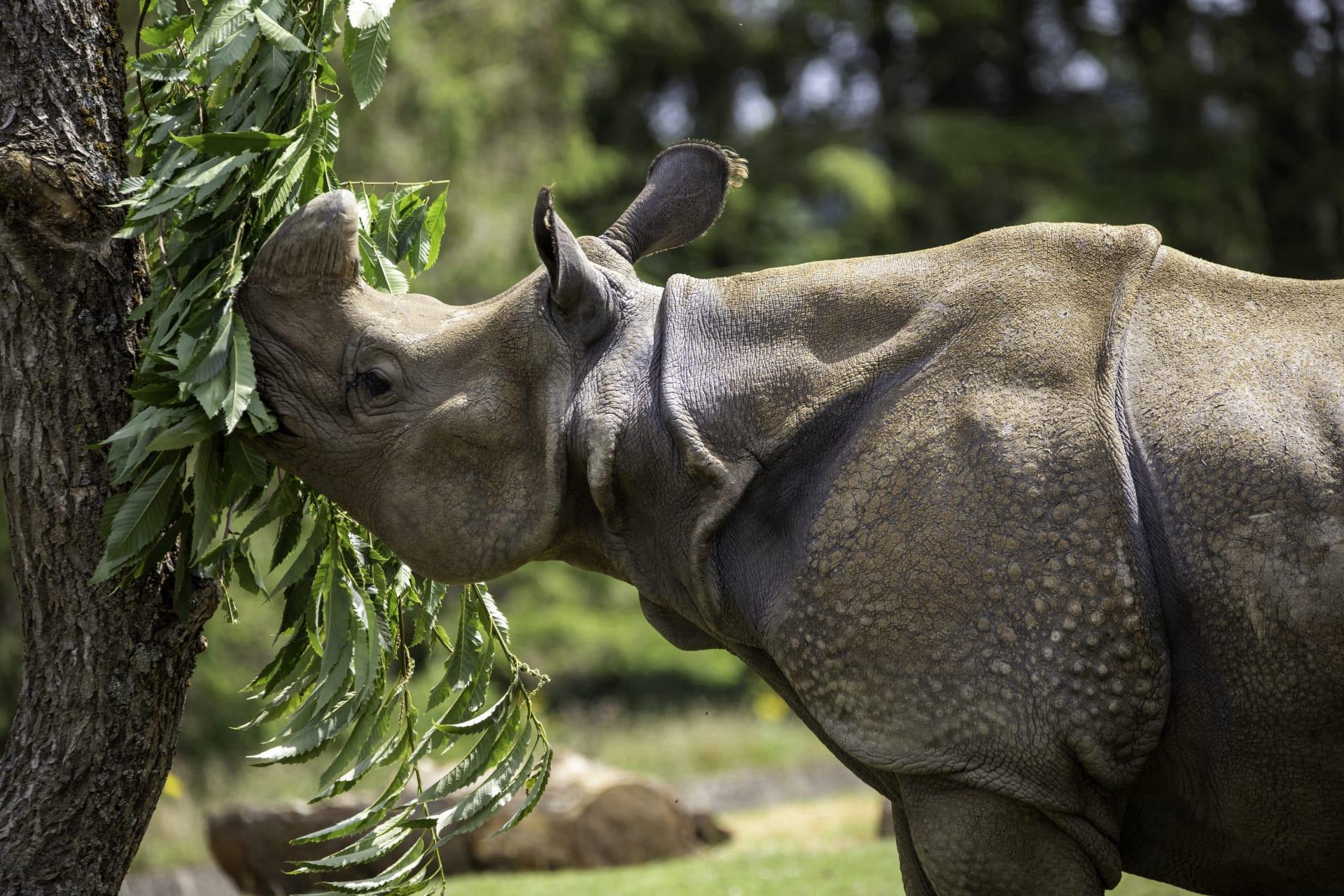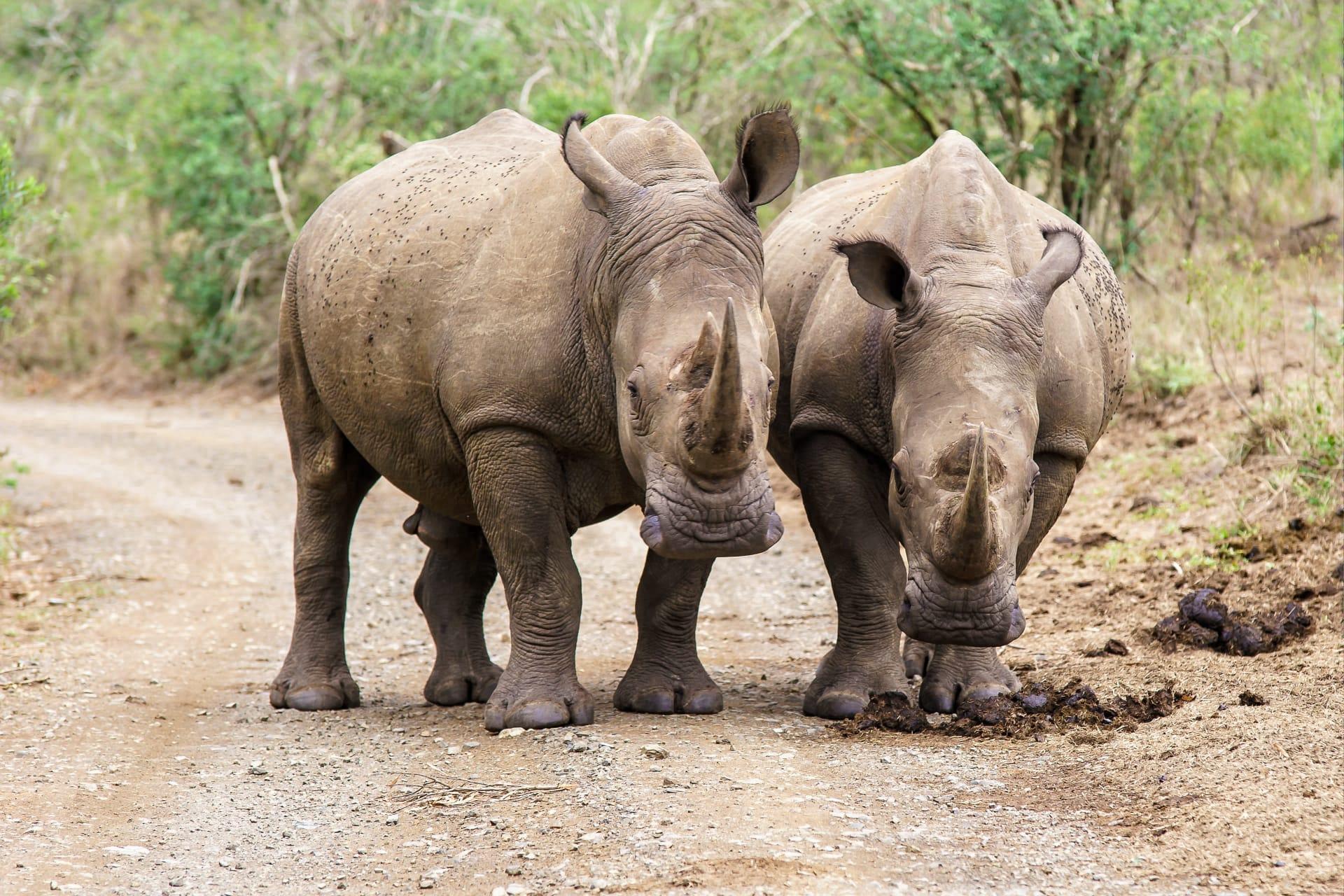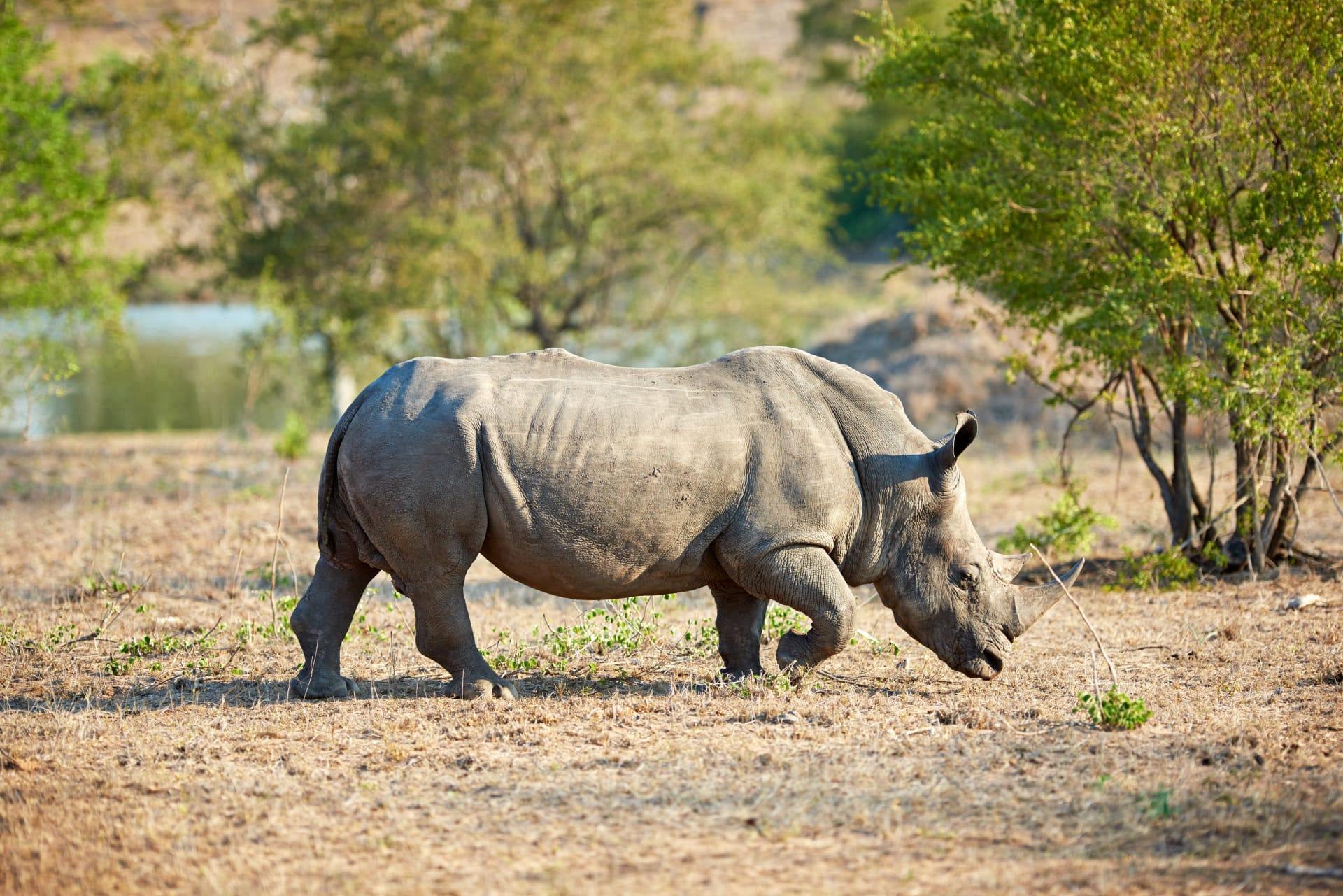Rhinoceros Trivia
- Home /
- Trivia Question /
- Animal /
- Rhinoceros Trivia
1
Question: How much can a rhinoceros weigh, and does it vary by species?
Answer: Absolutely, the weight of a rhinoceros significantly varies among species. The white rhino, one of the largest, can weigh up to 2,300 kilograms (about 5,070 pounds), while the smaller Sumatran rhino typically weighs around 600 to 950 kilograms (1,320 to 2,090 pounds). These massive weights contribute to their status as some of the largest land mammals.
Question: What is the lifespan of a rhinoceros in the wild, and how does this compare to captivity?
Answer: Rhinos generally live between 35 to 50 years in the wild, depending on the species. In captivity, however, their lifespan can extend up to 40-50 years, with some individuals even reaching over 50. The difference in lifespan is often attributed to factors like regular veterinary care and absence of predators in captivity.

2
Question: Do rhinoceroses have poor eyesight, and how does this impact their behavior?
Answer: It's a common misconception that rhinos have poor eyesight. While it's true they can't see well at long distances, their eyesight is adequate for their needs. They compensate with excellent hearing and a keen sense of smell, which helps in detecting predators and other rhinos.
Question: Is it true that rhino horns have medicinal properties?
Answer: No, this is a myth. Rhino horns are primarily made of keratin, the same substance as human hair and nails, and there's no scientific evidence to support claims of their medicinal value. Unfortunately, this myth drives illegal poaching, severely threatening rhino populations.

3
Question: How fast can a rhinoceros run, and does their size affect their speed?
Answer: Despite their size, rhinos are surprisingly fast. A white rhino can run up to 50 km/h (31 mph), while smaller species like the black rhino can reach speeds of 55 km/h (34 mph). Their speed is an evolutionary adaptation to escape predators and charge threats.
Question: What kind of social structure do rhinoceroses have?
Answer: Rhinos are generally solitary animals, especially males. Females are more likely to be seen with their offspring. However, in some cases, especially for the white rhinos, they may form small, loose groups. These social structures are primarily driven by the availability of resources like food and water.

4
Question: Are rhinos territorial, and how do they mark their territory?
Answer: Yes, particularly the males. They are quite territorial and use several methods to mark their territory, including spraying urine, depositing dung in strategically located piles, and scraping their feet. These scent markings alert other rhinos to the presence of a territorial individual.
Question: What do rhinoceroses eat, and does diet vary by species?
Answer: Rhino diets vary by species. White rhinos are primarily grazers, eating grass. Black rhinos, in contrast, are browsers and feed on leaves, branches, and shoots from bushes and trees. This dietary difference is reflected in their lip shapes: white rhinos have wide, flat lips for grazing, while black rhinos have pointed lips for browsing.

5
Question: How many species of rhinoceros are there, and where are they found?
Answer: There are five species of rhinoceros: the white and black rhinos in Africa, and the Indian, Javan, and Sumatran rhinos in Asia. Their habitats range from savannas and grasslands to dense forests in tropical regions.
Question: What are the major threats to rhinoceros populations?
Answer: The most significant threats include poaching for their horns and habitat loss. Poaching is primarily driven by the illegal horn trade, while habitat loss results from agricultural expansion, logging, and human settlement. Conservation efforts are crucial to protect these magnificent creatures from further decline.